- Joined
- Oct 9, 2007
- Messages
- 47,239 (7.55/day)
- Location
- Hyderabad, India
| System Name | RBMK-1000 |
|---|---|
| Processor | AMD Ryzen 7 5700G |
| Motherboard | ASUS ROG Strix B450-E Gaming |
| Cooling | DeepCool Gammax L240 V2 |
| Memory | 2x 8GB G.Skill Sniper X |
| Video Card(s) | Palit GeForce RTX 2080 SUPER GameRock |
| Storage | Western Digital Black NVMe 512GB |
| Display(s) | BenQ 1440p 60 Hz 27-inch |
| Case | Corsair Carbide 100R |
| Audio Device(s) | ASUS SupremeFX S1220A |
| Power Supply | Cooler Master MWE Gold 650W |
| Mouse | ASUS ROG Strix Impact |
| Keyboard | Gamdias Hermes E2 |
| Software | Windows 11 Pro |
On this day 40 years ago, Intel Corporation introduced the world's first commercially available microprocessor - the Intel 4004 - triggering the start of the digital revolution. While most people have never seen a microprocessor, devices that contain them have become so integrated into daily life that they have become virtually indispensible.
Microprocessors are the "brains" inside computers, servers, phones, cars, cameras, refrigerators, radios, TVs and many other everyday devices. The proliferation of microprocessors is due in large part to Intel's relentless pursuit of Moore's Law, a forecast for the pace of silicon technology development that states that roughly every 2 years transistor density of semiconductors will double, while increasing functionality and performance and decreasing costs. It has become the basic business model for the semiconductor industry for more than 40 years.
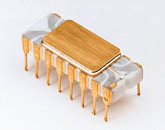
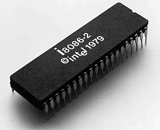
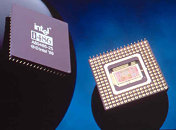
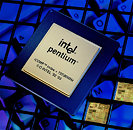
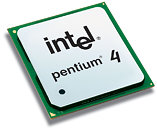
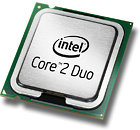
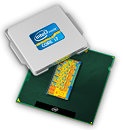
For example, compared to the Intel 4004, today's second-generation Intel Core processors are more than 350,000 times the performance and each transistor uses about 5,000 times less energy. In this same time period, the price of a transistor has dropped by a factor of about 50,000.
Future microprocessors developed on Intel's next-generation 22nm manufacturing process are due in systems starting next year and will deliver even more energy-efficient performance as a result of the company's breakthrough 3-D Tri-Gate transistors that make use of a new transistor structure. These novel transistors usher in the next era of Moore's Law and make possible a new generation of innovations across a broad spectrum of devices.
While looking back to see how much things have changed since the microprocessor's introduction, it's astounding to think about the future and how this digital revolution will continue at a rapid pace as microprocessor technology continues to evolve.
"The sheer number of advances in the next 40 years will equal or surpass all of the innovative activity that has taken place over the last 10,000 years of human history," said Justin Rattner, Intel chief technology officer.
Such advances in chip technology are paving the way for an age when computing systems will be aware of what is happening around them, and anticipate people's needs. This capability is poised to fundamentally change the nature of how people interact with and relate to information devices and the services they provide. Future context-aware devices ranging from PCs and smartphones to automobiles and televisions, will be able to advise people and guide them through their day in a manner more like a personal assistant than a traditional computer.
Reflections and Predications: The Impact of the Microprocessor
To celebrate the past 40 years of microprocessor innovation and look ahead at the next 40 years, Intel compiled photos, video interviews, opinion pieces and a number of info graphics and other materials with insight from Intel and industry executives, analysts, futurists and engineers.
View at TechPowerUp Main Site
Microprocessors are the "brains" inside computers, servers, phones, cars, cameras, refrigerators, radios, TVs and many other everyday devices. The proliferation of microprocessors is due in large part to Intel's relentless pursuit of Moore's Law, a forecast for the pace of silicon technology development that states that roughly every 2 years transistor density of semiconductors will double, while increasing functionality and performance and decreasing costs. It has become the basic business model for the semiconductor industry for more than 40 years.







For example, compared to the Intel 4004, today's second-generation Intel Core processors are more than 350,000 times the performance and each transistor uses about 5,000 times less energy. In this same time period, the price of a transistor has dropped by a factor of about 50,000.
Future microprocessors developed on Intel's next-generation 22nm manufacturing process are due in systems starting next year and will deliver even more energy-efficient performance as a result of the company's breakthrough 3-D Tri-Gate transistors that make use of a new transistor structure. These novel transistors usher in the next era of Moore's Law and make possible a new generation of innovations across a broad spectrum of devices.
While looking back to see how much things have changed since the microprocessor's introduction, it's astounding to think about the future and how this digital revolution will continue at a rapid pace as microprocessor technology continues to evolve.
"The sheer number of advances in the next 40 years will equal or surpass all of the innovative activity that has taken place over the last 10,000 years of human history," said Justin Rattner, Intel chief technology officer.
Such advances in chip technology are paving the way for an age when computing systems will be aware of what is happening around them, and anticipate people's needs. This capability is poised to fundamentally change the nature of how people interact with and relate to information devices and the services they provide. Future context-aware devices ranging from PCs and smartphones to automobiles and televisions, will be able to advise people and guide them through their day in a manner more like a personal assistant than a traditional computer.
Reflections and Predications: The Impact of the Microprocessor
To celebrate the past 40 years of microprocessor innovation and look ahead at the next 40 years, Intel compiled photos, video interviews, opinion pieces and a number of info graphics and other materials with insight from Intel and industry executives, analysts, futurists and engineers.
View at TechPowerUp Main Site
Last edited by a moderator:





 qubit reaches for his lawyer.
qubit reaches for his lawyer.



 AFAIK, no way to do it back then, the clock was determined by a "Koyo" hardware clock chip that says 50.000 Mhz ...I just looked at the old MB!
AFAIK, no way to do it back then, the clock was determined by a "Koyo" hardware clock chip that says 50.000 Mhz ...I just looked at the old MB!